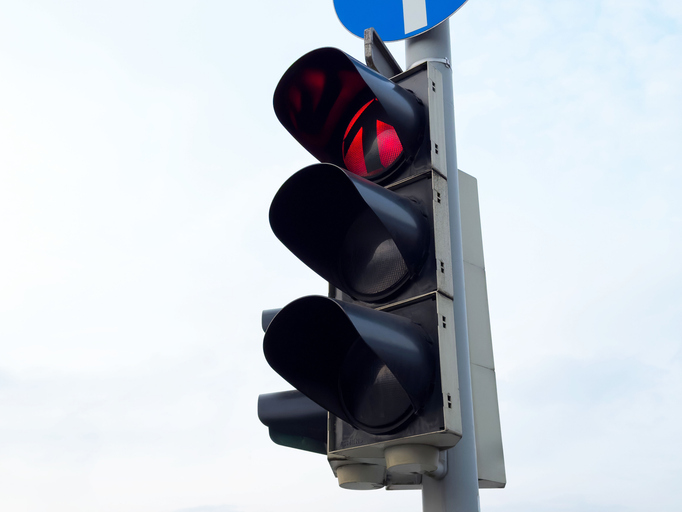Baltimore Retimes Traffic Signals to Cut Congestion and Boost Safety

If you’ve ever gripped your steering wheel in frustration at a Baltimore red light while the next two ahead turn green, you’re not alone. But relief may finally be on the way.
The city’s Department of Transportation is in the middle of a multi-year effort to retime Baltimore’s roughly 1,400 traffic signals. The project, which began in 2023, aims to ease congestion, improve pedestrian safety, and address long-standing complaints about poorly synchronized lights.
The $4.5 million initiative, led by consulting firm Mead & Hunt and several subcontractors, kicked off with traffic counts and data analysis last fall. Engineers have divided the city into six regions, with new signal patterns already implemented in South Baltimore, East Baltimore, and the Central Business District.
Crews are currently finishing work in Central North neighborhoods, including Station North, Charles Village, and Remington. They’ll tackle West and Northwest Baltimore next, with the project expected to wrap up by February 2026.
Officials hope this effort fares better than previous attempts. In 2018, a round of downtown signal tweaks caused gridlock, forcing the city to quickly undo the changes.
Still, regular adjustments are essential, said Clea Baumhofer, Baltimore’s chief of traffic engineering, noting that traffic patterns evolve over time.
Drivers may already notice changes downtown, such as shorter peak-hour light cycles on President Street and longer lead times for pedestrians at some crosswalks.
What Drivers Can Expect
The city has recently launched an interactive map on its project webpage, showing progress and indicating which intersections have remote management capability.
But don’t expect to breeze through green lights down Calvert or St. Paul streets. Engineers intentionally prevent those corridors from becoming speedways, balancing flow with safety.
So next time you hit another red, take a breath. You are the traffic, unless someone’s blocking the box. That one you’re allowed to blame. If you’ve ever gripped your steering wheel in frustration at a Baltimore red light while the next two ahead turn green, you’re not alone. But relief may finally be on the way.
The city’s Department of Transportation is in the middle of a multi-year effort to retime Baltimore’s roughly 1,400 traffic signals. The project, which commenced in 2023, aims to alleviate congestion, enhance pedestrian safety, and address longstanding complaints about poorly synchronized traffic lights.
The $4.5 million initiative, led by consulting firm Mead & Hunt and several subcontractors, kicked off with traffic counts and data analysis last fall. Engineers have divided the city into six regions, with new signal patterns already implemented in South Baltimore, East Baltimore, and the Central Business District.
Crews are currently finishing work in Central North neighborhoods, including Station North, Charles Village, and Remington. They’ll tackle West and Northwest Baltimore next, with the project expected to wrap up by February 2026.
Lessons Learned From Past Missteps
Officials hope this effort fares better than previous attempts. In 2018, a round of downtown signal tweaks caused gridlock, forcing the city to quickly undo the changes.
Still, regular adjustments are essential, said Clea Baumhofer, Baltimore’s chief of traffic engineering, noting that traffic patterns evolve.
Drivers may already notice changes downtown, such as shorter peak-hour light cycles on President Street and longer lead times for pedestrians at some crosswalks.
High-Tech Approach to an Old Problem
Unlike in the past, when engineers relied on paper, stopwatches, and field observations, the current project uses video cameras, drones, sensors, and even artificial intelligence to measure traffic volumes and flow.
Crews record data at each intersection — counting how many vehicles turn or continue straight — then calculate a new timing plan, implement it, and monitor results to make additional tweaks if needed.
Why retime instead of replace? Most of Baltimore’s signals are decades old, running on physical clocks that can easily fall out of sync or fail in bad weather. Fully replacing the system would cost far more.
As a stopgap, about 150 downtown signals have been outfitted with ThruGreen devices, which allow them to communicate with the city’s central traffic control center and be adjusted remotely.
What Drivers Can Expect
The city has recently launched an interactive map on its project webpage, showing progress and indicating which intersections have remote management capability.
But don’t expect to breeze through green lights down Calvert or St. Paul streets. Engineers intentionally prevent those corridors from becoming speedways, balancing flow with safety.
So next time you hit another red, take a breath. You are the traffic, unless someone’s blocking the box. That one you’re allowed to blame.
Baltimore Retimes Traffic Signals to Cut Congestion and Boost Safety was originally published on wolbbaltimore.com
















